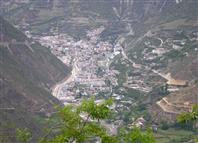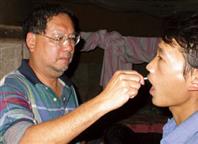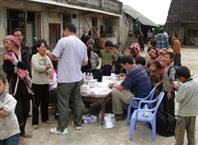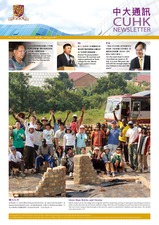Many travellers suffer from altitude sickness in Tibet. Also known as ‘acute mountain sickness’, the condition’s obvious symptoms are dizziness, headache, nausea and fatigue of the limbs, and in more serious cases, pulmonary and cerebral edema, which can be fatal.
There are acute and chronic types of altitude sickness, with occurrence depending on the individual. Generally speaking, acute problems start manifesting themselves at about 3,200 metres above sea level. The body tries to adjust with faster heartbeat and breathing which ups oxygen intake and increases the number of red blood cells pumped to different parts of the body. In the chronic version, the blood becomes sticky from the presence of too many red blood cells as a result of prolonged exposure to high altitudes. This leads to a shortage of oxygen and hence the symptoms of altitude sickness.
Chronic mountain sickness was first discovered in the aborigines of the Andes Mountains. Yet the Tibetans, also dwellers in lofty plateaux, do not have the problem. Why? No one seemed to have studied this before, until a chat between Prof. Hugh Montgomery of University College London and Prof. Leung Po-sing of the then CUHK Department of Physiology several years ago triggered a research project. Listening to the two, Prof. Tam Siu-cheung Michael, then chairman of the department, had an idea that eventually drew the curtain on how Tibetans cope with life in the mountains.
Professor Montgomery is a doctor specializing in heart disease and a geneticist. His best-known research entails the discovery that runners’ performances are influenced by genes, which means whether you’re a long-distance runner or a sprinter is something inborn. Professor Montgomery is also a mountaineer who has conquered Mount Everest. Conversations with him easily touched on topics such as genes’ impact on the human body, a climber’s worst fear—altitude sickness, and how Tibetans move with ease on high plains. He even speculated that the last might have to do with genetic adjustments. Professor Tam felt it was a topic worth pursuing. He had excellent connections in Yunnan whose high plateau area near Tibet was inhabited by Tibetan communities. Doing research in Yunnan would be much easier than in Tibet.
Professor Tam got in touch with one of his long-time collaborators, the Yunnan Population and Family Planning Research Institute who agreed to render him full support. A team comprising experts from mainland China, Hong Kong and England was formed and Deqin County in Diqing Tibetan Autonomous Prefecture in Northern Yunnan was chosen as their base. The job of the team was to take gene samples from the Tibetans. Located 3,800 metres above sea level, less than 50 miles south of Tibet, Deqin County has a fully Tibetan population of 60,000. Most villages had little contact with the outside, and every winter, snow would cut the mountain off from the rest of the world.
‘The less contact with outsiders, the more racially pure the ethnic group and the more representative the gene samples,’ Professor Tam explained. ‘We picked far-flung villages, miles away from main thoroughfares and towns. The other criteria were that the distance between two villages was at least five miles and that they were not strongly related by blood. We had to negotiate treacherous mountain paths daily, often next to a plunging abyss. It was both exciting and dangerous.’
On the first day of setting up base, almost every member of the research team showed signs of altitude sickness. Professor Tam had a throbbing headache that kept him awake all night. At Deqin, they made their ascent in two groups and entered the villages under the guidance of the institute’s staff. With the consent of the village chief and the villagers, they started collecting saliva samples. The team paid two visits to Deqin, the first in the summer of 2006 when due to inexperience, they only managed to land 80 samples. The three-week September 2008 trip, however, yielded 600.
The samples were sent to the Beijing Institute of Genomics of the Chinese Academy of Sciences. The result was as expected—it’s in the genes. Compared to the Han, Tibetans’ EPASI gene has a mutated form that does not make the H1F2a protein which stimulates red blood cell production. This lower red blood cell count protects them from altitude sickness. But how do they manage to take in enough oxygen? That would perhaps be another topic for research.
In June last year, the project findings were published in the authoritative journal PNAS. They were confirmed by another research report appearing in Science a month later. This discovery is a beginning that can possibly open doors to other fascinating studies. For example, how does the EPASI gene affect the fertility of Han women living in high plains?
Having worked for three decades at CUHK, Professor Tam quipped that it’s time for him to retire. Let’s hope that other researchers will continue down the path and reveal more secrets about life in the mountains. 




































































































































































Social Bookmarks